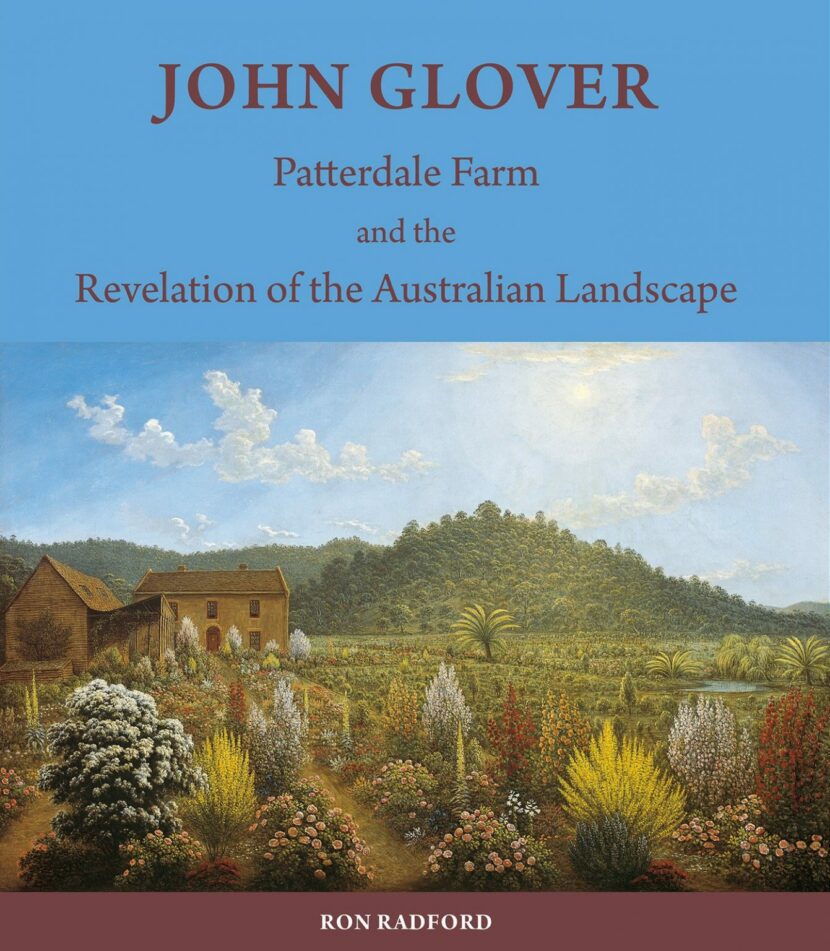Trevor Nottle reviews John Glover, Patterdale Farm and the Revelation of the Australia Landscape by Ron Radford, Ovata Press, Launceston, 2023
John Glover’s painting A View of the artist’s house and garden at Mills Plains, van Dieman’s Land, 1835 brings to the fore the importance of the light in Australia and the unique form and foliage of Australian plants that differentiated the place from all others.
In this book Dr Radford (Director of the National Gallery of Australia from 2004 until 2014) delivers a highly detailed assessment of the artist John Glover, his life, family, career, development, productions and how all these parts of the man came together in his life in Australia. In particular, Radford develops his case that Glover is unique among colonial artists in his capacity to interpret the new landscape, and the light in which he painted, following his arrival in van Dieman’s Land on 1 April 1831 at the age of 64. Having left behind a successful career in London Glover, with his family, moved to Australia to start life as farmers and land-owners. He continued to paint in his new country and despatched consignments of paintings to his London agent to be exhibited and sold.
Radford supports his account with comprehensive references to Glover’s sketch books and paintings. Not being any kind of art historian, I could not critique Radford’s analysis of Glover’s observation and painterly techniques that so brilliantly convey the qualities of light and the subtle botanical differences he detected when he went out to sketch or paint. I can only say that Radford is right: Glover was the first to capture the quality of Australian light and to master the forms of native trees and their foliage.
For gardeners it seems a pity that Radford’s researches into art history did not take him among the Dutch flower painters and their practice of depicting flowers from all seasons in one painting. Had he done so his analysis of Glover’s garden, as shown in his view of his garden at Mills Plains, might have been even more acute. Still, that is a very small quibble, which will worry few and detracts not at all from the overall authority Radford brings to his subject.
Reading this book led me to think about how both artists and gardeners are interested in light and shade and the contrasts or transitions between them, as well as in shape and form. Indeed, in Mediterranean climate zones, where many plants are dormant in summer, these aspects may be fundamentally more important than colour in creating a place of beauty throughout the year. This is something that incomers to the Mediterranean regions learn, just as painters who moved to Mediterranean countries in the 19th century – to the Riviera, Egypt, the Levant, Italy, Greece or Morocco – also had to come to appreciate the different qualities of the light they found there and to develop new techniques to capture it successfully. As an early interpreter of light in a Mediterranean-type climate, Glover is surely worthy of a wider admiration. Radford’s book will help to achieve that.
The book can be bought at https://www.ovatapress.com.au/store/p/john-glover-nahzt
See also ‘Patterdale, Tasmania: The making of an artist’s garden’, Australian Garden History, vol. 34 no. 1 July 2022, where Catherine Shields explains her approach to recreating the garden at Patterdale by taking inspiration from John Glover’s painting.


